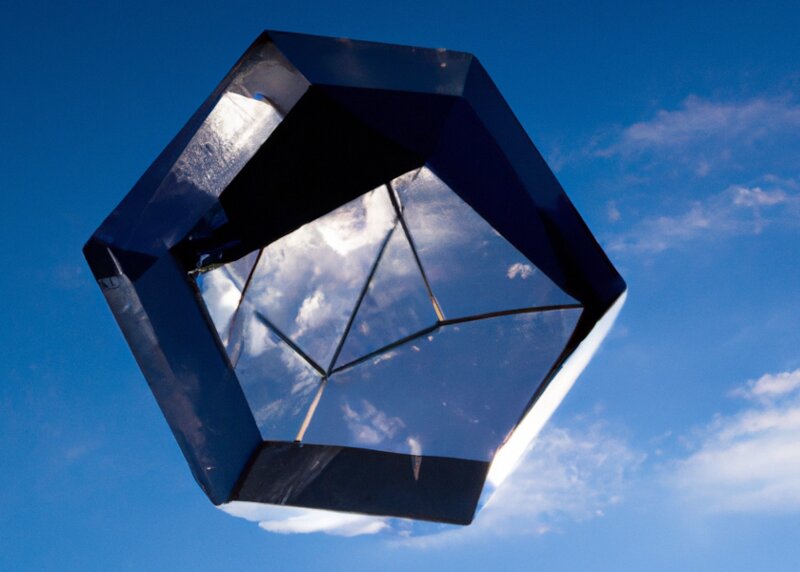Hints of regular solid duality
I was looking back at the book The Concrete Tetrahedron and wondered what would happen if I used the title as a prompt to DALL-E. Could I get it to create an image of a concrete tetrahedron?
It seemed to understand concrete but not tetrahedron, which is a little surprising since tetrahedron is such a specific word. But one of my attempts to create a tetrahedron did result in a nice octahedron. That made me curious about trying other regular solids.
There are five regular solids:
- tetrahedron
- hexahedron (i.e. cube)
- octahedron
- dodecahedron
- icosahedron
each named for the number of faces in Greek.
If you connect the centroids of each of the faces of a regular solid, you get another regular solid, its dual. And if you do this twice, you get the original solid back [1]. A while back I wrote a post on how you can demonstrate this using Zometool pieces.
The tetrahedron is its own dual. The cube and octahedron are duals, as are the dodecahedron and icosahedron.
The results asking DALL-E for images of regular solids were disappointing overall. I typically got back images that were not regular solids. But what I found interesting was that asking for a dodecahedron produced something sorta like an icosahedron and vice versa.
Here's what I got when I asked for a dodecahedron:

The image is very nearly an icosahedron.
When I asked for an icosahedron, I got something that kinda sorta looks like a dodecahedron.

[1] Not the identical solid you started with, but another solid of the same type. The double dual is smaller, and possibly rotated. See the next post.
The post Hints of regular solid duality first appeared on John D. Cook.